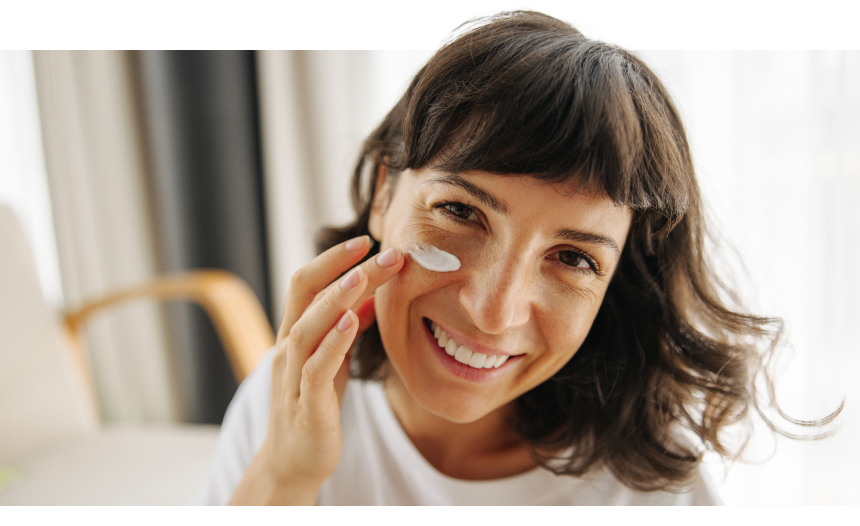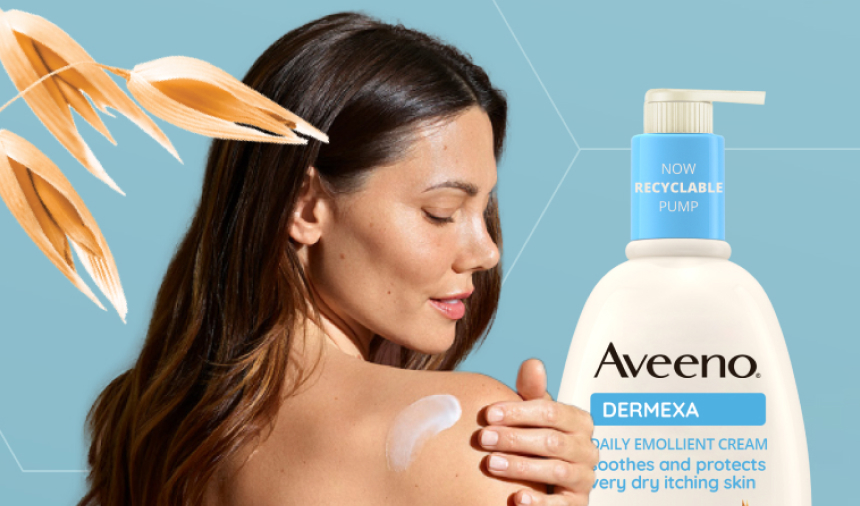
Managing dry skin effectively can be a tricky ask. But if you want to give your customers the best support possible to help them manage their dry skin and eczema, we’re here to help.
In this skincare training for pharmacists guide, we’ll talk you through the basics of dry skin management and the role of emollients. You can then use these insights to offer the best possible advice and support to your customers.
Quick links
All about dry skin
What is dry skin?
Dry skin is one of the most common skin types in the UK. For many people, dry skin is not a sign of anything serious1 – though it can be difficult to deal with. For others, dry skin may be associated with more serious skin conditions such as eczema or contact dermatitis1.
What causes dry skin?
Dry skin is caused, generally speaking, by a lack of hydration for the skin itself. The skin produces an oily substance called ‘sebum’ to help protect the outer layer of the skin from water loss2. But if the skin doesn’t get enough sebum, it can lose water and start to feel dry2.
Dermatitis & eczema
Dermatitis and eczema are medical terms used to describe inflammatory skin conditions (where the skin becomes inflamed, itchy, and red). There are different types of dermatitis and eczema, including:
- Atopic (thought to have a genetic link)
- Contact (thought to be a response to an irritant).
Mild irritant dermatitis (also known as contact dermatitis) is recognised as a ‘self-limiting condition’ in which over the counter (OTC) products should not be prescribed.
As a result, pharmacists and healthcare professionals have an important role to play when it comes to identifying and managing dermatitis alongside their customers.
The dry skin market
Dry skin represents a sizeable marketplace. The figures below give an indication of the scale of the dry skin and dermatitis market:

The NHS Business Services Authority spends approximately £33,000 a year on emollients for dry skin3.

Approximately 13 million people seek medical advice for a skin problem every year4.

There are approximately 6.8 million GP consultations for dermatitis every year5.
The skin's function and structure
Understanding the skin’s function and structure is the first step in being able to offer impactful advice. Having this knowledge can help you support and educate customers to better manage their skin conditions.
The skin is the largest organ in the body. It consists of three layers:
- Epidermis (outer layer)
- Dermis (inner layer)
- Hypodermis (lowermost layer).

Epidermis
The epidermis is made up of several layers. The outmost layer, known as ‘the stratum corneum’, acts as a natural barrier against external irritants to prevent them from entering the dermis and helps to regulate water loss.
The epidermis also consists of keratinocytes, which produce lipids or free fatty acids. These fatty substances act as a bonding agent for skin cells and play a critical role in maintaining the skin’s structure.
Dermis
The middle layer of the skin (the dermis) consists of two layers6:
- Papillary layer – The upper, thinner layer which is made up of loose connective tissue.
- Reticular layer – The deeper, thicker layer which consists of dense connective tissues and collagen fibres.
This connective tissue matrix is where sweat glands and hair follicles are found6.
Hypodermis
The hypodermis is the deepest layer of the skin. It contains blood vessels, hair follicles, and adipose glands6.
The role of ceramides in skin care
Ceramides play a critical role in the skin, which is why they are often listed as one of the core ingredients in skin care products.
What are ceramides and what do they do?
Simply put, ceramides are lipids (fat) that are found in the outermost layer of the skin. They make up approximately 50% of the skin’s lipid composition7. So, it’s no surprise that they play a vital role in how the skin looks and how it responds to environmental threats.
How do ceramides help the skin?
Ceramides are a vital component of lipid composition within the epidermis, as they act as an important ingredient to the lamellar sheets, which help to hold the skin's barrier together8.
Sometimes, certain factors can cause a change in the barrier lipid composition, which can lead to dry skin. While the link is unclear, most skin conditions with a weakened barrier function show a decrease in ceramides8.
However, it is possible to chemically restore ceramides within the skin. Ceramides can be applied topically through skin care products such as emollients, which in turn can help to improve dry skin9.

Managing dry skin with emollients
Emollients can be used to help manage dry, itchy skin10. There are different types of emollients, including10:

Lotions

Sprays

Creams

Oitments
How do emollients work?
Emollients work by helping to keep the skin well-hydrated. They are moisturisers that essentially work by soothing and hydrating the skin10.
Emollients can be occlusive, humectant, or both.
Occlusive emollients
Occlusive emollients form a protective barrier to prevent water loss and keep allergens and irritants from coming into contact with the skin.
Humectant emollients
Humectant emollients have water-attracting properties, which help to draw and retain moisture within the skin.
How should emollients be used?
Emollients should be applied generously and regularly to the skin. Ideally, they should be used three or four times a day to help deliver the best results10.
As a general guide:
- Younger children should use 250g per week.
- Older children and adults should use 500g per week.
How to apply:

There are a number of different ways to use emollients effectively. Leave on emollients such as lotions, creams, and sprays, should be applied directly to the skin10. You should apply these in the direction of hair growth, which helps to prevent the hair follicles from getting blocked10.
If you’re using emollients in combination with a steroid cream, you should wait at least 30 minutes before applying to the skin10.
Want to learn more?
Want to find out more? Take a look at our other skin care training guides below:
Explore the skin microbiome

Discover more about the skin microbiome and how it works.
Learn how to identify skin types
Find out how to identify different skin types and needs, so you can recommend the right skin care products for your customers.
Identifying skin types training.
References
- https://www.nottsapc.nhs.uk/media/1444/dry_skin-mild-_self-care_apc.pdf
- https://www.shropshiretelfordandwrekin.nhs.uk/your-health/self-care/mild-dry-skin/
- NHS England (2018), Conditions for which over the counter items should not routinely be prescribed in primary care: findings of consultation and next steps, NHS Board Paper. Available at: www.england.nhs.uk/wp-content/uploads/2018/03/08-pb-29-03-2018-otc-fully-combined.pdf
- Schofield J et al. (2009), Skin conditions in the UK: a healthcare needs assessment. Available at: https://www.nottingham.ac.uk/research/groups/cebd/documents/hcnaskinconditionsuk2009.pdf
- Andy Tisman (2008), Driving the self care agenda, PAGB Annual Review, IMS Health. Available at: www.pagb.co.uk/content/uplodads/2016/06/Driving-the-self-care-agenda-AndyTisman.pdf
- Sharma S. et al. (2007). Anatomy, Skin (Integument), Epidermis. Available at: https://www.ncbi.nlm.nih.gov/books/NBK470464
- Harwood et al (2017), Lipid functions in skin: Differential effects of n-3 polyunsaturated fatty acids on cutaneous ceramides, in a human skin organ culture
- Coderch et al (2003), Ceramides and skin function, Am J Clin Dermatol, 2003;4(2):107-29, DOI 10.2165/00128071-200304020-00004. Available at: www.ncbi.nlm.nih.gov/pubmed/12553851
- Purnamaweti et al (2007), The role of moisturizers in addressing various kinds of dermatitis: a review, Clin med Res, 15(3-4): 75-87, DOI 10.3121/cmr.2017.1363. Available at: www.ncbi.nlm.nih.gov/pmc/articles/PMC5849435/
- https://www.nhs.uk/conditions/emollients/